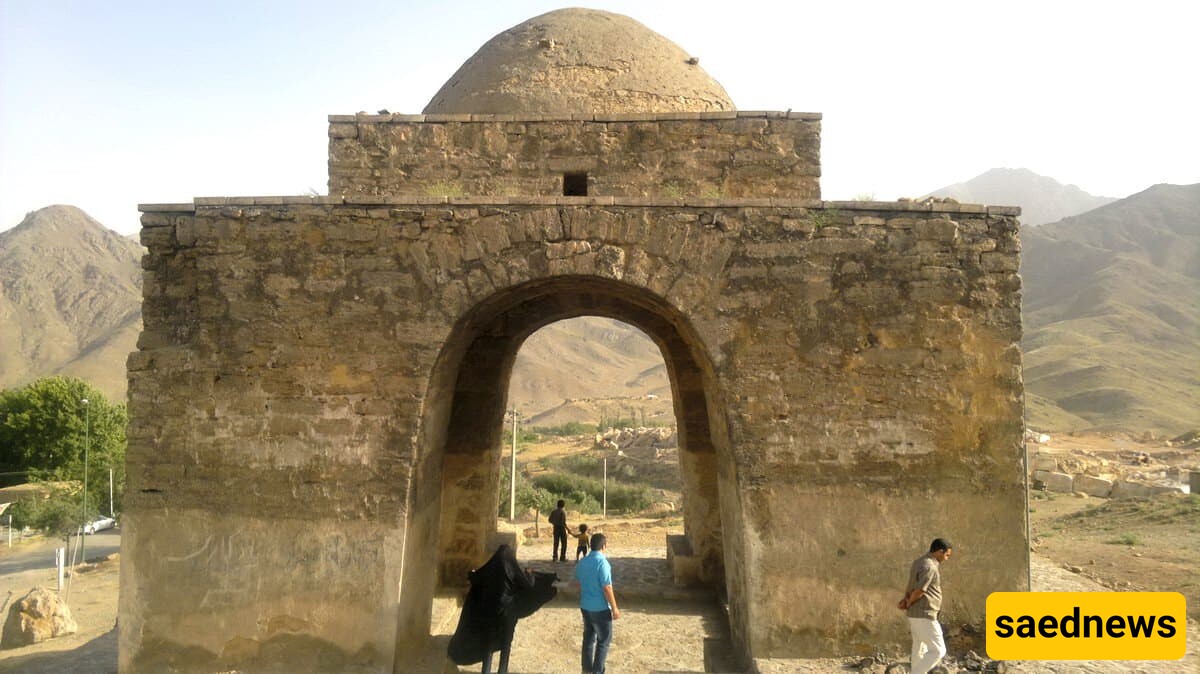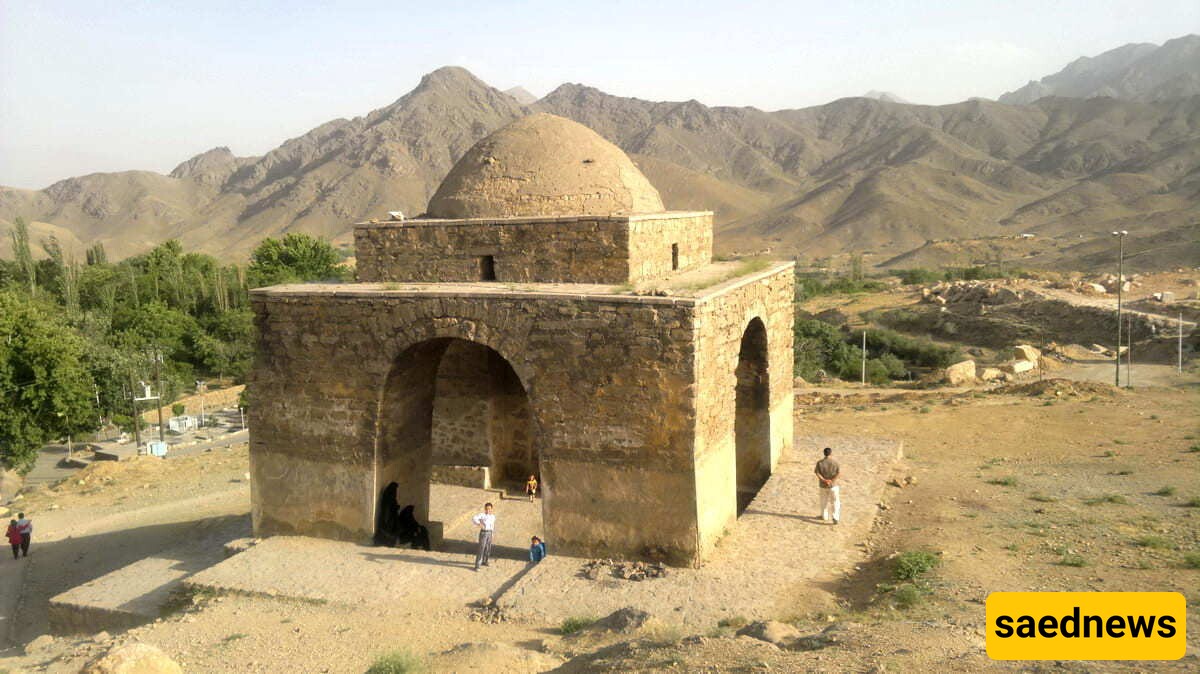SAEDNEWS: Nestled near Kashan in Iran, the Niasar Fire Temple is an ancient Zoroastrian site dating back to the Sassanid era. This historic temple, symbolic of fire worship, stands as a testament to Persian craftsmanship and cultural depth.

According to SAEDNEWS, situated on a hillside in Iran’s Isfahan Province, near the town of Niasar, the Niasar Fire Temple is one of Iran's oldest Zoroastrian sites. Built during the Sassanid period (224–651 AD), this architectural relic illustrates ancient Persian spiritual practices and engineering skills. Overlooking scenic landscapes, the temple served as a center for fire worship—a vital element in Zoroastrian beliefs. Today, it is revered as a significant cultural site, drawing those fascinated by its historical and architectural value.
Known as the “Chahar Taq” or “four arches,” the Niasar Fire Temple, built in the 3rd century AD, captures the Zoroastrian design ideals of the Sassanid era. Perched at an elevated location, the temple was both a place of worship and a regional landmark, embodying the reverence for fire as a divine symbol in Zoroastrianism.
In Zoroastrian practice, fire symbolizes purity, spiritual energy, and the divine. This temple housed a sacred flame, a focal point for rituals and pilgrimage for those seeking a deeper spiritual connection. During ancient times, the temple attracted visitors from surrounding areas, making Niasar an important spiritual center.
With its simple yet profound four-arch design, the Niasar Fire Temple exemplifies the “Chahar Taq” style, featuring four open arches supporting a central dome. The open layout, devoid of walls, allowed airflow to sustain the fire while containing its sacred energy. The square structure symbolizes the earth, with the central fire representing divine light and spiritual power.
This four-arch design, though straightforward, reflects remarkable structural expertise, with each arch contributing to the stability of the central dome. This architectural style became a cornerstone of Persian design, influencing the development of later Islamic structures and Persian architecture.

Fire holds a central role in Zoroastrianism, embodying life, purity, and wisdom. Known as "Atar," fire was treated as a living connection to the divine, and temples like Niasar’s were built to house an eternal flame that symbolized divine presence. Pilgrims would offer prayers and perform rituals around the fire, seeing it as an expression of their deepest spiritual beliefs.
As one of the last standing fire temples from the Sassanid period, Niasar serves as a powerful reminder of the role of fire in ancient Persian life. Although Zoroastrianism declined in Iran after the Islamic conquest, the fire temple at Niasar remains an important marker of Persian religious heritage.
The temple’s surroundings enhance its spiritual aura, with the Niasar Cave located nearby. Believed to predate the temple, the cave likely served as a ritual site before the rise of Zoroastrianism, adding further historical depth to the location. Featuring passageways and chambers, the cave may have been a place for meditation and introspection for ancient spiritual seekers.
The Niasar Cave, alongside the fire temple, allows visitors to explore the area’s natural and cultural history. From its elevated vantage, the temple also offers scenic views, providing a peaceful atmosphere for reflection and exploration.
The Niasar Fire Temple is a popular destination for historians, archaeologists, and travelers keen on Iran’s Zoroastrian roots. Its straightforward yet significant architectural design has made it a key attraction in the Kashan region. Efforts by cultural organizations and the government aim to preserve the temple and surrounding landscape from environmental and human impact.
These preservation initiatives focus on structural repairs and promoting responsible tourism to protect the temple’s ancient stonework. Educational programs and guided tours further encourage appreciation of the temple’s history and significance, helping visitors engage with the site responsibly.
The four-arch Chahar Taq style seen in Niasar influenced many later Persian and Islamic structures. The concept of an open, dome-supported design became integral to mosque and palace architecture, allowing for spacious, airy interiors. This simple, practical design evolved into a symbol of Persian architectural identity, linking functionality with spiritual symbolism.
The legacy of the Niasar Fire Temple’s design can be observed in various Islamic-era monuments, where the openness and structural elegance were adapted for new purposes, showing how Niasar’s architecture inspired future styles.

The Niasar Fire Temple endures as a symbol of ancient Persian spirituality and innovation in architecture. It represents Zoroastrian values of purity and wisdom while showcasing the engineering skill of the Sassanid period. As one of the few remaining fire temples, Niasar continues to connect present-day visitors to Iran’s rich cultural and spiritual heritage, standing as a relic of Persia’s historical depth and architectural artistry.

